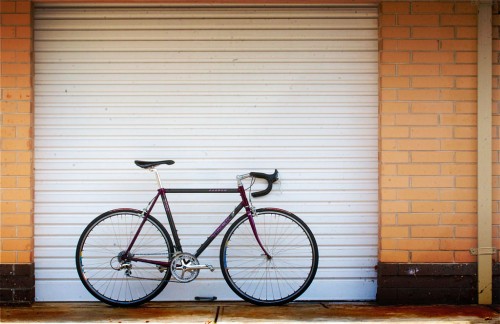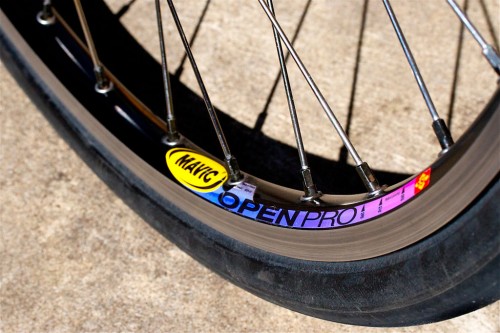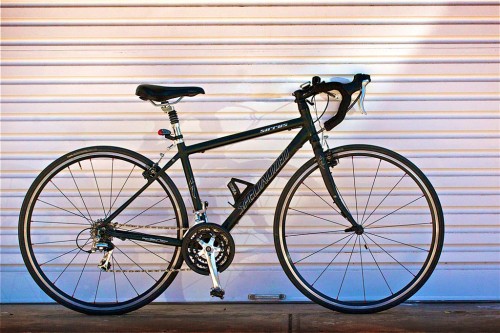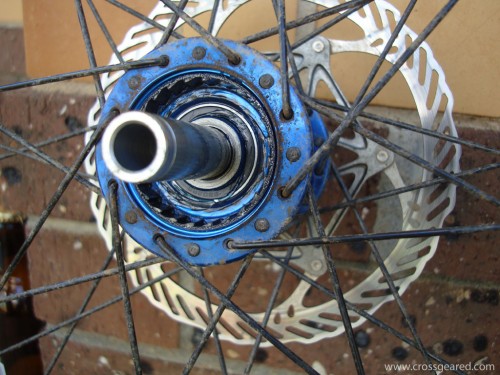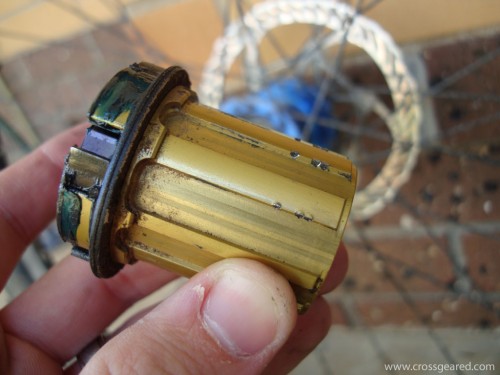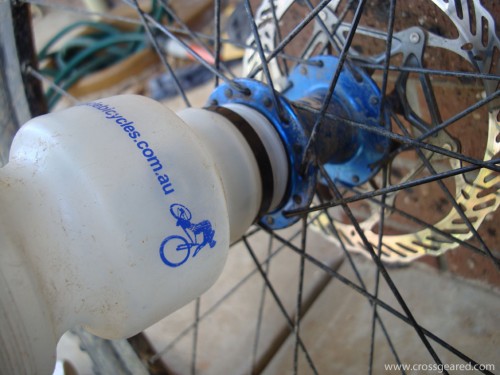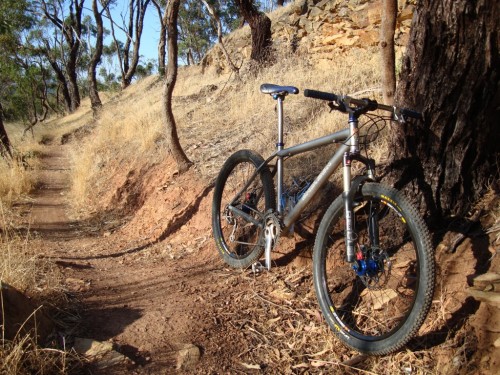
If you read the last post about the UK-14’er, you’ll know that I’m done with my Paul’s Motolite brakes. And, if you look at the photo above, you’ll see that the UK-14’er no longer has Paul’s Motolite brakes.
As luck would have it, Eric sent me some BB7 disc brakes. Apparently, he was very impressed with the BB7s on his Turner Burner and wanted to share. Or, perhaps he was tired of my endless emails about nearly every disc brake system available. Whatever the case, his timing was good as I was getting quite fed up with the Motolites.
The BB7 is a mechanical disc brake, as opposed to hydraulic, so it is simple, and more likely to be reliable. On the downside, BB7s are slightly heavier than most hydraulic brakes, and significantly heavier than the Motolotes.
If you’ve been around mountain biking or mountain bikers much in the past decade or so, you would have likely heard an argument or two regarding hydraulic and mechanical disc brakes. Here is my stance: hydraulic disc brake systems generally get redesigned and dramatically changed every couple years. The BB7 has been around in a largely unchanged state since 1999. This tells me that the bicycle hydraulic brake (even over a decade into its existence) is still in the early stages of development. In contrast, the BB7, widely viewed as ‘The’ mechanical disc brake, has only seen minor updates and is a mature technology and product. I almost convinced myself to get some XT or Elixir CR brakes, but I didn’t see either option ending well. But, my indecision was no longer a problem when the BB7s arrive on my doorstep.
Anyway, back to the upgrade.
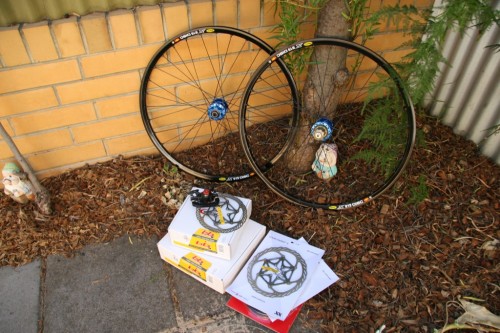
First, the brakes:
- Avid BB7 disc brakes (front & rear)
- Avid Cleansweep X rotors, Ti bolts (185mm front, 160mm rear)
- Avid Straight Jacket brake cable set (full length housing)
Next, the old Mavic Crossmax XL and ST wheels were not disc-compatible, so here is the new custom wheelset from Chain Reaction Cycles:
- Hope Pro II 32h hubs
- Mavic XM819 Disc UST rims
- DT Swiss Competition 2.0/1.8mm spokes
- DT Swiss Pro-lock nipples
That only leaves us with what was removed. Again, another list:
- Paul’s Motolite brakes (front & rear)
- V-brake bosses (front & rear)
- Old brake housing and cables
- Mavic Crossmax XL wheel (front)
- Mavic Crossmax ST wheel (rear)
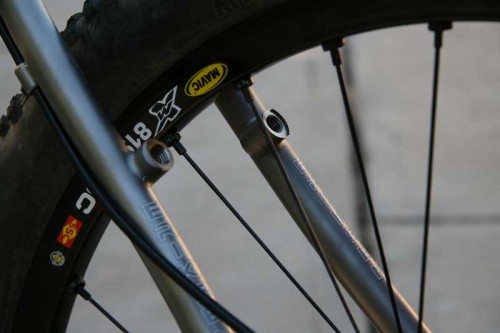
The v-brake boss removal from the frame and fork was much easier than expected. Both bosses came out easily with the help of a very short 8mm open-ended wrench. I’ve read reports of very stubborn brake bosses whose removal required heroic efforts. Luckily, in my case all of the bosses came out with minimal effort. I left the frame bosses empty, and covered the fork bosses with black vinyl electrical tape.

The BB7s and Straight Jacket cables are fairly standard. The cable housings are run full-length, front and rear, and the BB7s are using the standard ‘sintered’ brake pads and mounting hardware. The cable install is very simple, and as with v-brakes, it is important to cleanup the housing ends and verify that there are no sharp edges or burs that may interfere with cable travel. I followed the included instructions from SRAM, along with some advice from the BB7 Setup video, also from SRAM.
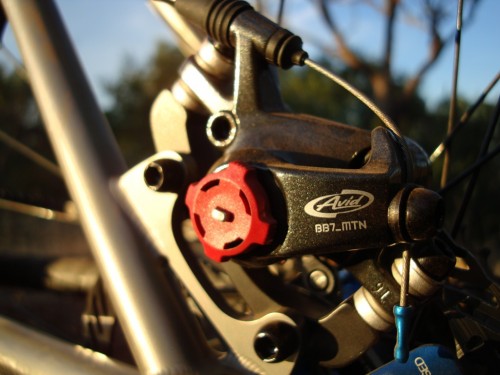
The Cleansweep X rotors are from the new Avid XX disc brakes. While the two-piece Cleansweep X rotors don’t really have much performance benefit over the standard ‘Rounagon’ rotors, they do look a lot better. And besides, what good is going to discs if they don’t look cool? The cool-looking Cleansweep X rotors are mounted with Ti hardware, which is supplied with the rotors, and is also cool.
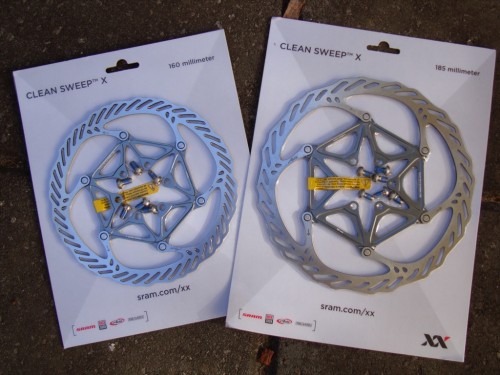
I kept the Paul’s Love levers. I really like the feel of the levers, and despite my dissatisfaction with their customer service, Paul’s does make some very nice parts.

The wheelset uses Mavic XM 819 UST Disc rims, which are similar to the ‘standard’ Mavic XC rim, the XC 717, but add UST tubeless compatibility, 2mm of width, and about 55g per wheel. While keeping a true and straight rim with discs isn’t as critical as it is with rim brakes, the XM 819 rims do look fairly stout. As a UST-compatible rim, the XM 819 will require no kits, sealant (supposedly) or anything else if I ever decide to try tubeless tires. However, I’ll probably try non-tubeless tires with sealant and see how it goes.

The Hope Pro II hubs are also new to me. I like the reliability of XT hubs and the sound and performance of the Mavic hubs. Hopefully the Hope hubs will deliver on both of these measures with the added benefit of being very light and very blue. From what I’ve heard so far, the Hopes will not disappoint in the ridiculously-loud-freewheel department.
The spokes and nipples are from DT Swiss. The spokes are the light-but-not-too-light ‘Competition’ 1.8/2.0mm variety. The nipples are DT Swiss Pro-Lock brass and should hopefully make for a strong and reliable wheel.
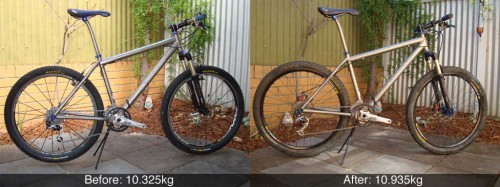
So, now we come to the downside of discs. Prior to the changes, the UK-14’er weighed 10.325kg (22.76 lbs). With the new brakes and wheels, the weight is 10.935kg (24.1 lbs), with the same tires and standard tubes. While all of this additional 610g (1.3 lbs) cannot be directly contributed to the disc brakes, the bulk of it can be as the new wheelset (on paper) only weighs about 76g* (.17 lbs) more than the old wheelset. In addition to the above list of removed part, I also removed the rarely-used Pop-Loc from the fork, which weighed 70-75g (Pop-Loc, cable and housing). On the bright side, I’m going to try the Larsen TT tires tubeless. This could save 300-350g (0.75 lbs), but I’m guessing with sealant and valve stems, the weight savings will be closer to 200-250g (0.5 lb).
*-The difference between the two wheelsets is actually 116g, but the XM 819 rims do not use rim tape, which I estimate at 40g. The Crossmax wheels required rim tape as the inner surface was uneven and punctured tubes. Crossmax weights are from Mavic. The Hope Pro II / Mavic XM 819 UST Disc wheelset weight is from the Speedgoat Custom Wheelset Builder.
For those who are really interested in tables and data, this is for you:
| Wheel | Weight (g) |
| Mavic Crossmax XL (front) | 738 |
| Mavic Crossmax ST (rear) | 915 |
| Mavic Crossmax XL/ST Wheelset | 1653 |
| Hope Pro II / Mavic XM 819 UST Disc Wheelset | 1769 |
Since I just installed everything and really haven’t had a chance to even break-in the brakes, I’m going to leave my riding impressions of the brakes and wheelset for a future post.
